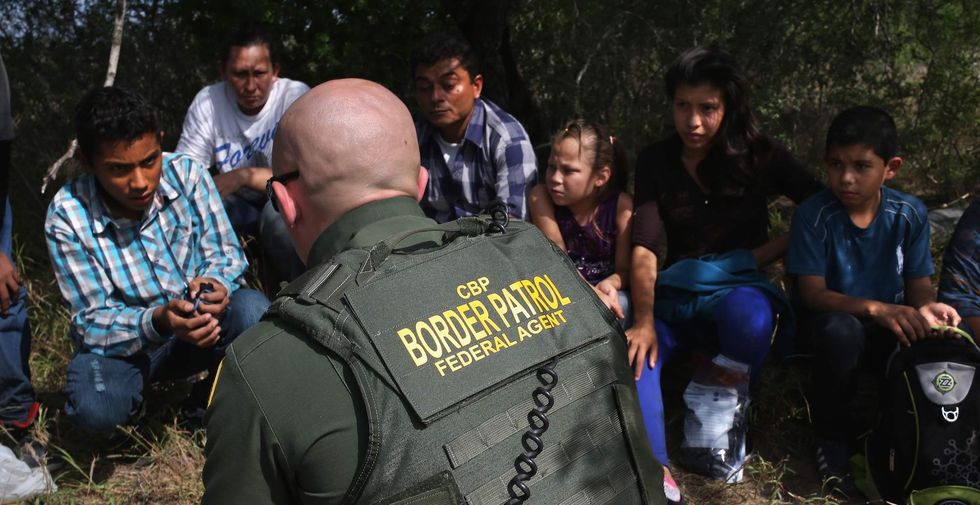
A new Pew Research Center analysis of data compiled by the Bureau of Justice Statistics shows that roughly 50 percent of all federal arrests are for immigration-related offenses. (John Moore/Getty Images)

Federal law enforcement officials are making more immigration-related arrests than in years prior, a new study shows.
The Pew Research Center’s analysis of data collected by the Bureau of Justice Statistics shows that nearly 50 percent — 81, 881 — of the 165,265 arrests made by the federal government in 2014, the most recent year for which comprehensive data is available, were for immigration-related offenses, such as illegal border crossing or smuggling other people into the United States.
A decade earlier, according to Pew, immigration-related crimes accounted for only 28 percent of all federal arrests.
The shift in arrests highlights a growing focus by federal agencies on immigration-related offenses. In fact, the Department of Homeland Security became the federal government’s top arrester in 2007, surpassing the Department of Justice.
In 2014 alone, the DHS accounted for 59 percent of all federal arrests, an increase of 22 points from 37 percent in 2004, the earliest year for which data is available following the department’s establishment in November 2002. By contrast, the DOJ made only 35 percent of all federal arrests in 2014, down from 48 percent 10 years earlier.
It was actually just one agency within the DHS — Customs and Border Protection — that made the most arrests in 2014. The agency made 64,954 arrests, which surpasses the total number of arrests made by all DOJ agencies — including the FBI — combined (58,265).
In total, the DOJ and the DHS made the vast majority of the federal government’s arrests. No other federal department accounted for more than 1 percent of the arrests made in 2014.
A disproportionate percentage of all arrests made in 2014 occurred along the U.S.-Mexico border. Five federal judicial districts along the southern perimeter — one in Arizona, one in California, one in New Mexico and two in Texas — accounted for approximately 61 percent of all federal arrests, regardless of crime category.
By contrast, those five districts produced roughly 40 percent of all federal arrests in 2004, Pew found. For context, it should be noted that the majority of arrests are not made federally, but at the state and local level. To put that into perspective, in 2014, there was a total of 11,205,833 arrests in states across the U.S., according to the FBI’s Crime in the United States report.
The high percentage of immigration-related federal arrests in 2014 coincided with huge U.S. Border Patrol staff increases in the mid-to-late 2000s. Between 2004 and 2010, the number of Border Patrol agents nearly doubled, jumping from 10,819 to 20,558.
On the campaign trail, President Donald Trump made immigration reform a key tenet of his candidacy, and in the first weeks of his presidency he took steps toward implementing the promises he made.
Just days after being sworn in as president, Trump signed an executive order directing the construction of a border wall. In February, Homeland Security Secretary John Kelly called for an increase in DHS officials and ordered the end of “catch-and-release” policies.
Kelly instructed the DHS to hire 5,000 additional Border Patrol agents and 10,000 new Immigration and Customs Enforcement officials in an effort to meet Trump’s broadening of the federal government’s priorities regarding the deportation of those living in the U.S. illegally.
The DHS chief also signed a directive ordering the end of controversial “catch-and-release” policies, which allow illegal immigrants to remain freely in the country while they await hearings on their legal status in the future.